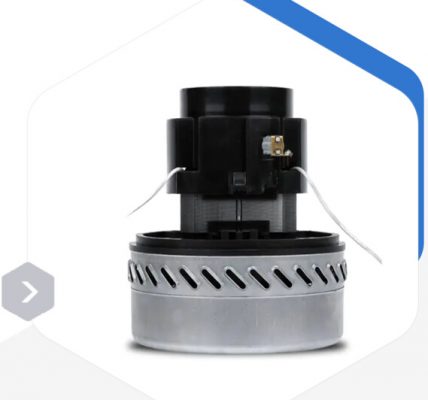
The Benefits of a Solar IP Camera Kit
Solar-powered security cameras are an increasingly popular choice. They are easy to install in a DIY fashion, can be placed anywhere sunlight reaches, and rival regular cameras for video quality.
They operate on DC solar power that is converted by a battery into an AC output voltage to power the camera. Look for an IP rating of 5 or higher to ensure that it can withstand outdoor conditions.
Power
Solar powered IP cameras allow for video surveillance to occur in remote locations where wired power can’t be easily provided. These cameras work by using photovoltaic cells to capture sunlight, which then charges the camera’s battery for use during the day or night. This means that you don’t need to worry about running long wires to the camera and can be more flexible with your installation.
When selecting a solar-powered camera, look for one that has a high resolution and a wide field of view. This will help ensure that you can see all of your property from a single location. Also, consider a model that offers motion detection and can send alerts to your smartphone. Many solar-powered security cameras come with advanced on-board storage systems that can be accessed manually or via a cloud server.
When choosing a solar-powered security camera, make sure it has a large enough rechargeable battery to last throughout the day and night. It’s also important to know how much power the equipment will draw, which can be found on the camera spec sheet. To determine the total amount of power needed, add up the nominal wattage for each piece of equipment (including cameras, wireless routers, point to point, radios, lighting, speakers, etc). If your system requires more than 50 watt hours, you will need a solar charge controller that can handle the amount of current required.
Storage
Compared to traditional surveillance cameras that require power cables, solar solar security cameras wireless outdoor ip camera kits harness the power of sunlight and rechargeable batteries for power. This means they can be used in remote areas where there is no electricity. They also do not pollute the environment with toxic waste or disposable batteries.
A solar ip camera is equipped with a high-grade solar panel that captures and converts the sun’s rays into direct current (DC). It then uses an inverter to change DC into alternating current (AC). Finally, it powers the wireless security camera and batteries for continued use.
There is a small amount of on-board storage for storing video, but the footage can also be sent to a network server for cloud storage. This allows users to access videos from anywhere on a mobile device. It is recommended to buy a solar security camera with a larger SD card so that it can record more videos.
Most solar-powered wireless security cameras come with a battery kit that contains rechargeable batteries, a solar panel, and other hardware. It is important to ensure that the power voltage of the solar panel and battery matches that of the wireless security camera. Otherwise, it will not work or might even be fried. It is also advisable to solar ip camera check the temperature limits of the battery. Many batteries are not able to perform well at freezing temperatures.
Video Quality
While the quality of a solar powered security camera is not as high as a high-resolution CCTV, the cameras can still provide excellent video clarity. If the camera can capture recognizable details, it will help authorities identify suspects faster. The footage can also be stored in the cloud for a long time, giving the law enforcement a clearer picture of what happened.
The latest solar-powered security cameras can use either Wi-Fi or 4G networks to transmit video data. They can save recordings on the SD card locally or in the cloud, depending on the user’s needs. Some models can even support a 64GB SD card, which is enough to store months of video. In addition, the cameras can be programmed to overwrite old video when necessary. The video can then be accessed remotely through a mobile device.
If you are looking for a wireless solar-powered security camera with excellent image quality, consider one of the latest products from REOLINK. The REOLINK Argus PT Ultra and REOLINK Go are wire-free security solutions that offer great image quality and night vision. They are also compatible with 2.4GHz and 5GHz WiFi, which can deliver fast and consistent connections.
The solar-powered security camera can be used to monitor your home or business, and the battery provides backup power in case of a blackout. The camera can be mounted in a convenient location, and the installation process is relatively easy.
Detection
Whether you want to monitor your home or business, the detection capabilities of your solar security camera are just as important as its power requirements. Solar-powered cameras with advanced detection features can help prevent break-ins and other crimes before they happen. They can also provide valuable evidence for law enforcement officials.
With a wide range of detection technologies, solar IP cameras can detect humans, animals, and other objects. They can also be programmed to alert you when a specific object passes through the field of view. Some models can even record footage in high-definition and provide night vision.
Solar-powered IP cameras are able to operate independently of electricity, which makes them a great choice for remote areas. They use a solar panel to convert sunlight into direct current (DC). The DC is then converted by an inverter to alternating current (AC), which powers the camera and battery.
A solar-powered security camera can save you a lot of money on energy bills. It also eliminates the need for expensive wiring and can be installed in areas where you would not have access to electricity. However, you should always test your solar security camera before buying it to make sure it works properly and is durable enough for your needs. The best way to do this is to take the camera outside during different weather conditions and in different lighting situations.


